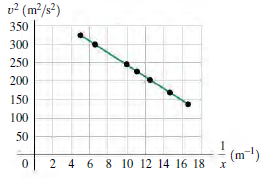A small, stationary sphere carries a net charge Q. You perform the following experiment to measure Q:
Question:
(a) Explain why the graph is a straight line.
(b) What is the initial speed v0 of the particle when it is very far from the sphere?
(c) What is Q?
(d) How close does the particle get to the sphere?
Assume that this distance is much larger than the radii of the particle and sphere, so continue to treat them as point particles and to assume that the sphere remains at rest.
Figure P23.80
Fantastic news! We've Found the answer you've been seeking!
Step by Step Answer:
Related Book For 

University Physics with Modern Physics
ISBN: 978-0133977981
14th edition
Authors: Hugh D. Young, Roger A. Freedman
Question Posted:





